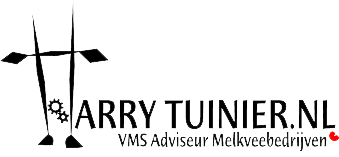Stray currents and Earth rays.
Stray currents are electrical currents that take a different path than the desired circuit.
The damage from stray currents with direct current (for example in the Netherlands and Belgium) is approximately one hundred times greater than that of stray currents when using alternating current.
The explanation must be sought in Lenz’s law, which ensures that conductive loops are kept as small as possible. In other words, the return current always flows close to the associated supply current and provides voltage for the environment.
(Wikipedia) Also think of rolled up power cables that are too long.
When stray current cannot take the desired path, she takes the cow as a path to earth.
A cow does not like that…. She will avoid the place where she experiences that and will not like to come back to that place.
Stray current can occur on all metals, including milking robots, concentrate boxes, drinking troughs, but also, for example, on the (feed) fences in the barn.
It can be due to insufficient grounding, sometimes because certain parts are insufficiently grounded or are insufficiently connected, i.e. voltage differences, to properly grounded parts.
It often helps to couple better or place a (much) larger or deeper earth stake.
But not good grounding can also be caused by damage to power cables, for example due to wear, age, overload, or mice?
Or due to damage to electrical equipment.
When the problem has been solved, the cow will first have to experience that the place is “clean” again. That can take time, but a cow is a herd animal, so if a few cows are normal again, the rest will do the same sooner.
Are you in doubt? Voltage differences are quite easy to measure and you can do this yourself.
Another phenomenon are Earth rays.
Earth rays have never been scientifically proven. Yet many livestock farmers know that cows, and especially horses, often had preferences for certain places in the pasture to lie down. And that didn’t always have to do with a drier place.
Also the experiences of livestock farmers who have started working with (source) correctors. Most experience significant improvements. That may indicate that there are places where animals, but sometimes also people, feel something that makes them not happy to stay in that place.
Increased cell counts are often seen in cows without pathogens being detected in quarter-milk samples.
So the cow’s immune system is in a heightened alarm phase for some reason!?!
A reduced drinking water intake could also be observed when terrestrial radiation flows through the drinking troughs.
You sometimes see that part of the barn is used less than other parts. And sometimes not always. Or that things get much worse in the stable after heavy rainfall, because the water veins transport large amounts of water. Why is this happening?
Underground water veins or impermeable soil or petrified layers or breaks in the layers would ensure that the earth rays cannot leave or take a certain route and are therefore felt by humans and animals and are experienced as very unpleasant.
Also here: Are you in doubt? There are also people here who specialize in this.
Causes of disappointing results should be excluded as much as possible.






